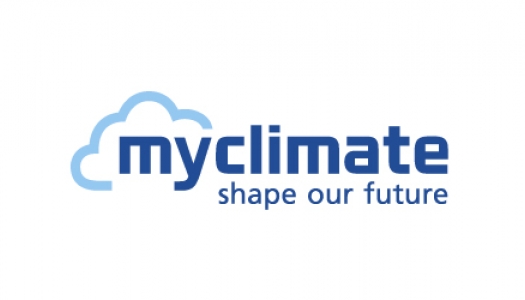
Climate Balance since 2011
Our contribution against climate change
Every commercial activity that is based on the combustion and processing of fossil fuels causes greenhouse gas emissions (GHG emissions) and thus contributes to climate change. This greenhouse effect leads to a shift of the earth's climate and threatens man and nature in various regions of the world in many ways.
Climate-neutral production in Tettnang
Based on the resource consumption measured by VAUDE, the non-profit organization myclimate calculates an annual climate balance for VAUDE. It includes the entire management, production of waterproof bike bags, all material and energy consumption, waste, warehouse and all goods transport caused by the production site, business, the daily commuting of its employees, the maintenance and the Kinderhaus childcare center.
This gives us transparency as to which company divisions cause which emissions. We analyze the results of the climate balance annually and derive objectives and actions for the further reduction of emissions. VAUDE compensates for all unavoidable emissions.

|
How carbon compensation works:
"Unavoidable emissions are |
Source of emissions
In the determination of emissions, there are three areas (scopes) in which emissions can arise from activities of a company.

Source: From emissions report on climate strategy,
Emission measured in CO2e
The unit used to measure emissions is CO2e: "carbon dioxide equivalents". In the calculation of the climate balance, not only all the upstream and downstream processes, but also all other greenhouse gases such as methane are included in the carbon dioxide measurement.
Greenhouse Gas Protocol as a basis
Calculation of emissions follows these myclimate principles:
- All greenhouse gases (GHG) are included in accordance with IPCC in the balance.
- There are no biogenic emissions.
- Reference year for the GRI Reporting is the respective year of GRI reporting period. Activities at the VAUDE Tettnang location are considered.
- The "Greenhouse Gas Protocol" (WRI) is the foundation. Any assumptions are respectively listed in the source.
- The source in almost all cases is ecoinvent 2.2 (LCA database) with GWP: 100a of IPCC (2007). Individual sources are each listed in the climate balance (PDF download).
- Consolidation approach of operational control (in accordance with WRI : GHG Protocol). In accordance with this approach, we take into account all emissions resulting from activities over which VAUDE has full feedthrough control.
For detailed figures about emissions at the VAUDE headquarters in Tettnang-Obereisenbach, see Greenhouse Gas Emissions in Detail)
Details on individual resource consumption:
- LINKChapter Energy
- Chapter Water
- Chapter Waste and Wastewater
- Chapter Materials
- Chapter Material Consumption
- Chapter Traffic
- Chapter Responsibility for Disposal
Insufficient data from our supply chain
VAUDE’s emissions do not only come from the company headquarters in Tettnang. In the VAUDE upstream supply chain, emissions are caused due to the quantity of manufactured products whose quantity we assess as many times higher than the emissions at the Tettnang site. We have no consumption data from the supply chain that we can use to calculate a climate balance.
An exception is the transportation for delivery of the goods to the warehouse in Tettnang: see Climate Neutral at the Tettnang Location - GHG Emissions in Detail and Halfway around the world - yet Environmentally Friendly Our goal is to clearly reduce the emissions from product logistics in the years to come, and then also to include these in the climate compensation.
| GRI: | G4-DMA Emissions |
| GRI: | G4-EN15 |
| GRI: | G4-EN16 |
| GRI: | G4-EN17 |
| GRI: | G4-EN18 |
| GRI: | G4-EN19 |






